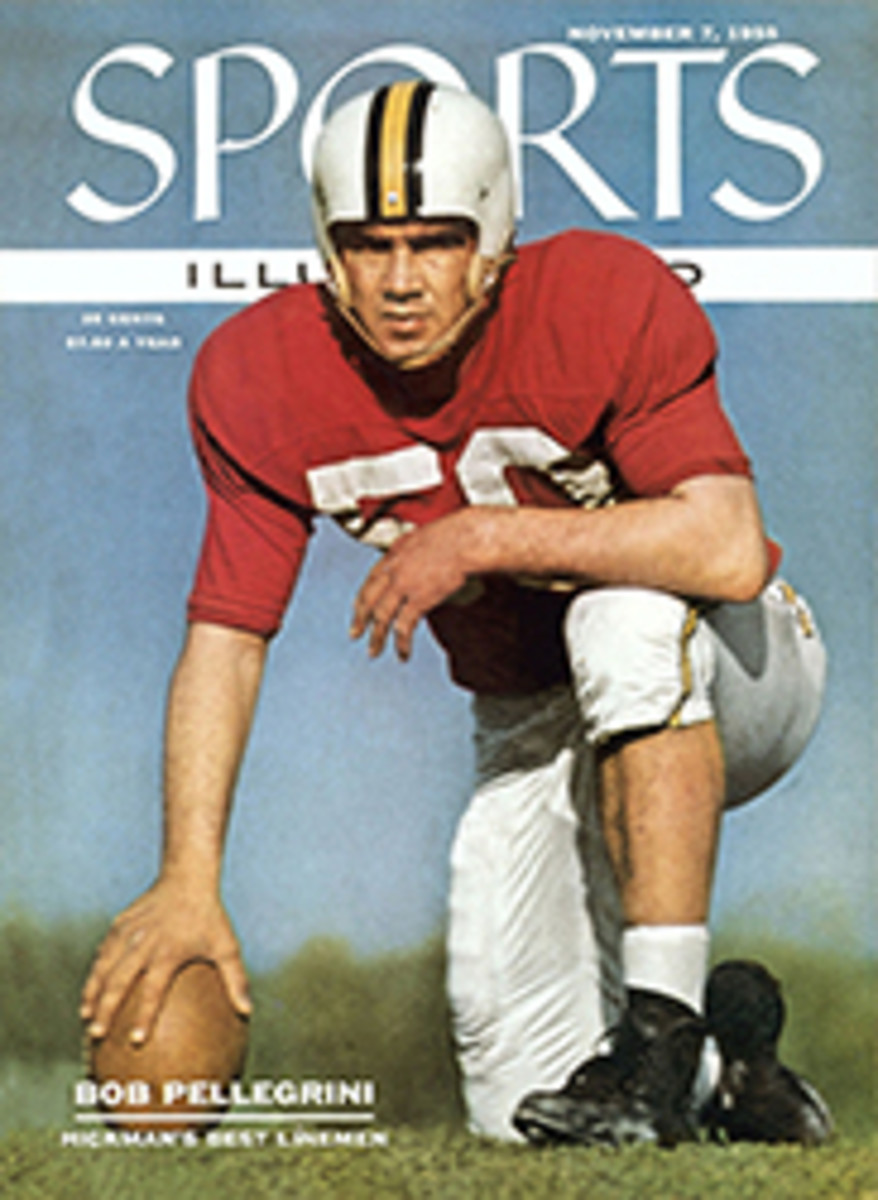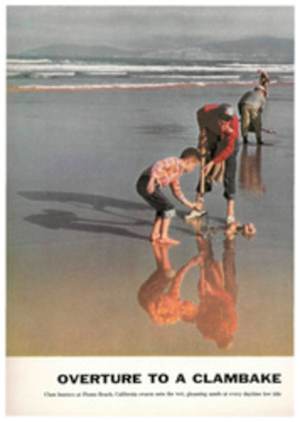
THE OUTSTANDING LINEMEN IN COLLEGE FOOTBALL
Throughout the 1955 season Herman Hickman, himself an ex-All-America guard, has been closely watching his favorite football players, the seldom-sung heroes of the line. Largely on the basis of personal observation, he has picked those he considers outstanding—men whose names rarely make the headlines, but whose deeds most certainly help to produce them.
Today's line play is a far cry from the days when a guard was classified as "a fullback with his brains knocked out." The requirements of modern day football may be more demanding, mentally at least, for linemen than backs. This is especially true in the past few years since the demise of the offensive and defensive specialists. Offensive line play is unnatural, and only through continuous drills and incessant work on fundamentals can the proper habits be established.
Individual defensive play is more simple and natural, but team defensive play has become complicated to the nth degree. I used to have a Hickman original that went: "The ultimate in defensive line play is to attain and maintain a specified position until the ball is definitely located, then go to it with the least possible delay and make the tackle for a minimum gain." After exploding this rather verbose pronouncement, I would turn and walk away. But in essence it is the basis for all defensive line play.
Linemen of the present are for the most part larger and more agile than their counterparts of even 25 years ago. The current crop of linemen must be rated the best yet. Enough time has elapsed to weed out the specialists of the two-platoon era and develop the all-round player who can go equally well on offense or defense.
Most of the linemen I have selected have been seen in action, in practice, and have been studied in game films. These observations have been confirmed by scouts and coaches during the past week. I have not attempted to select a so-called All-America line by position. Many of these men are strangers to the preseason prognosticators (some of the best preseason prospects have since been hampered by injuries), but with November here they have stood pretty sound testing and have not been found wanting in any department of play.
So:
Here's to the unsung boys up front:
No—here's to the men who bear the brunt!
Ron Beagle, End, Navy: Last Season Ron won about every honor extant, including the Maxwell Trophy as the season's outstanding player. With Michigan's Ron Kramer suffering from early season injuries and Army's Don Holleder shifted to quarterback, there is little doubt that he is the outstanding end in the country. He has all the requisites: great competitive spirit, excellent blocking, vicious tackling; he runs his pass patterns as diagrammed and is a tricky decoy. Beagle is a first classman, weighs around 190 pounds and is 6 feet tall.
Pat Bisceglia. Guard, Notre Dame: The backbone of the rugged and underrated Notre Dame line this season is Bisceglia. Older than most college players at 25 and not so large as linemen go these days, his play and spirited determination have been an inspiration to the entire squad. Offensively, his in-line blocking is explosive, and downfield he is always harrying the secondary. Defensively, he moves with catlike grace and has the happy facility of "being where the ball is at."
Bo Bolinger, Guard, Oklahoma: Although I haven't had the opportunity to see Bo in action yet this year except through the game films, I have talked to many opposing coaches, and they all claim that he lives up to his advance billing. Gomer Jones, one of the game's greatest line coaches and a tremendous center himself in his playing days at Ohio State, has this to say about Bolinger: "He's very quick and durable, has never-been hurt; he is tireless, has good agility, reacts well and is a strong blocker. He's also one of our fastest men down under punts. He plays very well against traps, is a good pursuer, a sure tackier and a real leader."
Bruce Bosley, Tackle, West Virginia: Coach Art Lewis of the Mountaineers told me: "No coach ever had two better ones." He was referring to Tackles Bruce Bosley and Sam Huff. And of the two, Bosley is the better. Regardless of "program weight" he hits the scales at around 245 pounds. Much sought by the pros, he is almost certain to be a No. 1 draft choice. For three years his play has been brilliant, both offensively and defensively.
Jim Brown, Guard, UCLA: I have Watched Jim for two seasons, studied game pictures and attended practice sessions where he was engaged solely in fundamental drills, and I second Coach Red Sanders' statement: "Brown is probably the best all-round guard ever to play for UCLA. He has never played a bad game." Brown, a 200-pounder, is high-spirited, smart, durable and above all has what I like to term "second reaction"—the ability to absorb the initial shock of a block and still make the tackle.
Steve DeLa Torre, Center. Florida: Although not large as centers go (5 feet 11 inches and 190 pounds), Steve has been praised by all opponents and coaches. Primarily a defensive specialist until a year ago, Steve has developed into a competent blocker. I've watched him for two years and during preseason practice, and he well merits all the praise heaped upon him.
Dick Hill, Guard, Michigan: Completely lost behind the reams of publicity on the great Ron Kramer is 190-pound junior Guard Dick Hill. He's great offensively, a fine trapper and pulls out well to lead plays. He has been one of the spearheads of the Wolverines' versatile attack. He is practically always the first man down under punts. Defensively, he is sharp and has excellent body control.
John Hopkins, Tackle, Navy: Captain Hopkins shifted from end to tackle in his sophomore year by his own request because he was "needed most" at this position. In his senior season he is a real leader on and off the field. He came fast last year, endowed with an abundance of speed and weighing around 210 pounds. But his development this season has been truly remarkable. Defensively, he has a fine change of pace—one play a "floater," the next a "slasher." His excellent offensive play is keynoted by the quality that sparks everything he does: aggressiveness.
Steve Myhra, Guard-Tackle, North Dakota: Myhra, a 225-pound transfer from Minnesota, must be regarded as one of the fine linemen of the year. He turned out this year to play tackle, but because of his tremendous speed—Coach Frank Zazula says he has timed him in 10.5 and 10.6 in full football uniform for the hundred—he was moved to an offensive guard. There he could pull out and lead the attack, still playing left tackle on defense to meet the brunt of opposing offenses. Zazula is particularly impressed with his initial charge and his ability to hit and recover and move quickly to whatever area appears crucial to the play.
Jim Parker, Guard, Ohio State: Last year as a sophomore Jim was slowed down by injuries, but this year the young giant—6 feet 3 inches and 250 pounds—has really been going to town. He's a tremendous linebacker, meeting the running plays with devastating tackles, and he seems to "smell" a forward pass. Despite his bulk Parker is probably the fastest lineman on the Ohio State squad—last week he picked a Northwestern fumble out of the air and ran it 40 yards for a touchdown.
Bob Pellegrini, Center, Maryland (see cover): Bob bulwarks what may well be the best line in college football. Even before Coach Jim Tatum switched him from guard to center this year, he had acquired a national reputation as a linebacker. I've had the opportunity to study him closely and he does everything well. Packing 225 pounds on a 6-foot 3-inch frame, he will be a prime favorite for the pro draft. A clever diagnostician of enemy plays and a superb defensive quarterback, he has taken to the offensive phase of the center position as a duck takes to water.
Hugh Pitts, center, TCU: Hugh was a unanimous selection last year as the All-Southwest Conference center on a losing team. Hampered by a leg injury early in the season, he came into his own against Miami a fortnight ago when he was tops defensively, and his blocking led to the winning touchdown. Pitts is a smart defensive quarterback with the size and speed to back up the line as it should be done.
Phil Tarasovic, Tackle, Yale: I've watched Phil from his days as a high school player in Bridgeport, Connecticut. He has played tackle and end equally well. He is most active and fast for his 6-foot 4-inch, 215-pound frame. He blocks with authority and his defensive play, to put it mildly, is rugged. He is a brilliant professional prospect as a defensive end.
FOUR PHOTOS
PELLEGRINI IN ACTION: A MULTI-THREAT CENTER
CHARGING PELLEGRINI THWARTS PASS BY SYRACUSE QUARTERBACK EDDIE ALBRIGHT, TURNS TO FOLLOW AS ALBRIGHT STARTS RUNNING AND WINDS UP THE PLAY THROWING HIM FOR A LOSS WITH A CLASSIC TACKLE FROM BEHIND

